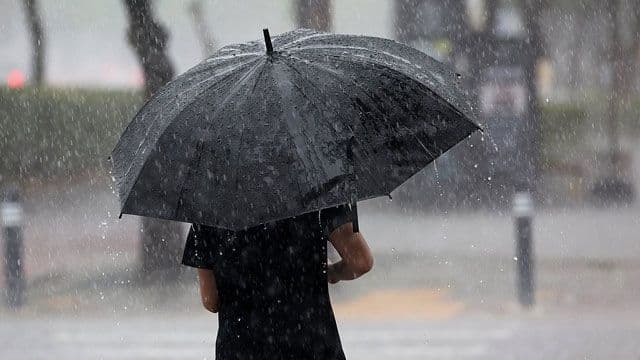South Korea's Shifting Skies: Navigating an Era of Extreme Weather
Explore South Korea's intensifying extreme weather. Understand the forces behind floods & heatwaves, and discover how communities are building resilience for a turbulent future.
Unveiling Korea's Turbulent Skies: A New Climatic Reality
South Korea is experiencing a dramatic shift in its weather patterns, moving beyond predictable seasonal changes into an era of unprecedented extremes. Recent events paint a stark picture: the southern regions, including , , , and , were recently deluged by what locals described as 'water bombs,' with some areas receiving a staggering 100mm of rain per hour. Cumulative rainfall figures were equally alarming, with recording 257.5mm, 240.5mm, and 212.3mm. This relentless downpour forced over 1,400 residents from 1,044 households to evacuate across four provinces, highlighting the immediate and severe threat to lives and livelihoods. Tragically, one individual in was swept away and later found in cardiac arrest, a grim reminder of the human cost. Essential infrastructure also buckled under the strain, leading to the closure of key expressways and numerous national parks, riverside parking lots, and low-lying bridges. These aren't isolated incidents; they are becoming the norm, signaling that must now contend with a fundamentally altered and more volatile climatic reality.
Beyond the Downpour: Dissecting the Drivers of Extreme Weather
The intensifying 'water bombs' and other extreme weather phenomena gripping are not random occurrences; they are deeply rooted in broader climatic shifts. While a single weather event is complex, the consistent trend of more intense rainfall, prolonged heatwaves, and erratic seasonal shifts points to the undeniable influence of . Warmer global temperatures lead to increased moisture in the atmosphere, creating a more fertile ground for heavy precipitation events. When coupled with altered atmospheric circulation patterns, this can result in slow-moving, highly concentrated rainbands that unleash catastrophic amounts of water in short periods, exactly what we've witnessed across the southern provinces. Understanding these underlying drivers — from rising sea surface temperatures influencing regional humidity to shifts in global wind patterns – is crucial. It moves us beyond simply reacting to individual storms and heatwaves, compelling us to address the systemic changes that are fundamentally reshaping climate and intensifying its meteorological challenges.
Building Bridges, Not Walls: Community Resilience in a Changing Climate
In the face of escalating climate challenges, building community resilience has become paramount. The recent mass evacuations, which saw over 1,400 people safely moved from flood-affected areas in , , and , demonstrate an existing, albeit strained, capacity for coordinated disaster response. However, resilience goes beyond mere evacuation; it involves proactive strategies that empower communities to withstand and recover from extreme events. This includes improving early warning systems, ensuring that forecasts of heavy rain – like the predicted 30-50mm/hour for and southern – translate into timely and effective local action. It also means fostering community-led initiatives, where local knowledge and collective action can bolster preparedness. Investing in 'green infrastructure' that mimics natural flood defenses, alongside upgrading traditional drainage systems, is vital. These efforts transform vulnerable areas into adaptive landscapes, allowing communities to build 'bridges' of preparedness and cooperation rather than simply erecting 'walls' against an unstoppable force.
Forecasting Tomorrow: Strategic Pathways to Weather Preparedness
Looking ahead, journey toward comprehensive weather preparedness demands a multi-faceted and forward-thinking strategy. Given the escalating frequency and intensity of extreme events, relying solely on reactive measures is no longer sustainable. The national meteorological agency's ongoing warnings about potential landslides, dike collapses, and widespread inundation underscore the urgency. Strategic pathways must include significant investments in cutting-edge weather forecasting , allowing for more precise and earlier predictions of severe weather. Equally important is enhancing resilient urban and rural planning, designing infrastructure that can withstand the 'new normal' of intense rainfall and heatwaves, rather than being overwhelmed by it. Public education campaigns are crucial for fostering a culture of preparedness, ensuring every citizen understands risks and response protocols. Lastly, fostering collaborations between government agencies, local communities, and scientific institutions will create a robust framework for adaptation. This holistic approach is essential for to navigate its shifting skies and safeguard its future against the intensifying impacts of a changing climate.
Related Articles

Weather Whiplash: Navigating Korea's Shifting Summer Skies

Weather Whiplash: Navigating Korea's Shifting Summer Skies

Decoding the Dual Extremes: Korea's Summer of Sweat and Storms

Decoding the Dual Extremes: Korea's Summer of Sweat and Storms

Korea's Summer Climate Puzzle: Heatwaves, Deluges, and the Art of Prediction

Korea's Summer Climate Puzzle: Heatwaves, Deluges, and the Art of Prediction

Weathering the Unprecedented: The Human Story of Adapting to Climate's Fury
